It was school photo day. The stakes were high. They always are when you have an only child and important milestones come around. And our schedule was, in policy speak, already constrained. Even with favourable traffic conditions it was unclear whether we would get to school on time.
I consulted with the main stakeholder – my daughter. She articulated her desire to have her hair done in a special style for the photo. A beautiful plait held in place with deep blue ribbons. I proposed alternative, more feasible solutions that were politely but firmly declined.
As the implementer, I identified several potential barriers, the main one being that I have never braided hair before. However, willingness would hopefully compensate for a lack of knowledge and skill (spoiler: it does not). Little did I expect that the experience would help me to understand Improvement in a deeper and more practical way than ever before.
A quick online search taught me that a plait requires a minimum of three strands. Similarly, any improvement requires three elements or strands: a goal, a plan, and specific improvement actions. If even one of the strands are missing, the outcome cannot be a plait, or an improvement. Unfortunately, most healthcare improvement projects omit at least one key element.
Even when all three elements are present, Healthcare Improvers tend to consider them sequentially. A goal or vision is articulated. Next, a project plan is developed. Finally, implementation begins. When we braid hair, the three strands are not connected end-to-end. They are inextricably interwoven from the very beginning.
Imagine our dominant hand holds the Goal strand, while the other has the Plan strand. Within one or two folds, the improvement action strand in the middle becomes part of both. It hardly matters which strand is selected for the first fold. What is important, is that all three strands are braided together. It is through the recursive interactions of braiding the strands that a plait synergistically emerges.
There are three distinct phases or stages to produce a beautiful plait. The initial or first phase is called ‘planning and preparation’, ‘initiation’ or even ‘implementation’ in the terminology of Improvement Science. The second phase is integration. The third and final phase is embedding the change. It is braiding the final folds and the firm application of a suitable elastic tie. The ribbon-of-choice is optional and will be influenced by key stakeholders (tip: expect different perspectives about the characteristics of the perfect ribbon). The three phases will be described in more detail in other blogs.
We have seen that successful plaits require three strands and three stages. There are three other dimensions to braiding that are equally essential: people; information; and resources. The three dimensions must be present in any improvement project or initiative for it to be successful. People, information, and resources are deceptively simple words. In practice, they are collective terms to help guide Improvers. Each term will be described in a blog dedicated to that subject and by extending the analogy of braiding hair.
Finally, braiding hair and producing a plait that is acceptable to all stakeholders require work. This is a statement of the obvious, but it is such an important concept that it needs to be said again. Improvement requires work! The three strands, three stages and three dimensions all require specific types of work. The work of improvement will also be described in future blogs.
Did I manage to braid an acceptable plait, and did it survive long enough for the school photo? Successful transitions from ‘now normal’ (messy hair) to any desired ‘new normal’ (a beautiful plait) always require specific work with three strands in three dimensions and three stages. The question is therefore whether I did all of the required improvement work or not?

